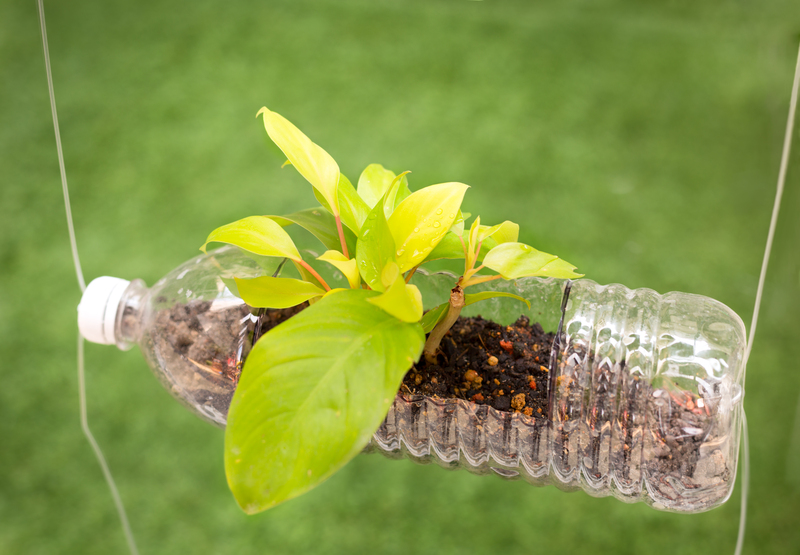Steps to an Eco-Friendly Home that Makes a Big Difference
Transforming your home into an eco-friendly haven not only benefits the planet but can also save you money in the long run. By making conscientious choices, you can reduce your carbon footprint and create a healthier living environment. This comprehensive guide will walk you through practical and impactful steps to make your home more sustainable.
1. Conduct an Energy Audit
Begin your journey towards an eco-friendly home with an energy audit. This assessment helps identify areas where energy is wasted and provides solutions to improve efficiency.
- Hire a professional auditor or use free online tools to evaluate your energy usage.
- Create an action plan focusing on the most significant energy-draining areas.
Why Energy Audits are Crucial
Energy audits reveal surprising insights about your energy consumption patterns, helping you to target the right areas for improvement. By addressing these issues, you not only reduce your utility bills but also decrease your carbon emissions.

2. Upgrade Your Insulation
Proper insulation is key to maintaining an energy-efficient home. It minimizes the escape of heated or cooled air, reducing the need for excessive heating or cooling.
- Identify areas like attics, walls, and floors that need better insulation.
- Consider eco-friendly materials like sheep's wool or recycled cotton for a sustainable choice.
Long-term Benefits of Insulation
Well-insulated homes retain comfortable temperatures year-round, leading to reduced energy consumption and lower utility bills. It's a one-time investment with significant long-term returns.
3. Switch to Energy-Efficient Appliances
Another significant step towards an environmentally friendly home is upgrading to energy-efficient appliances. These appliances consume less energy without compromising on performance.
- Look for the Energy Star label as a guide to choosing efficient products.
- Consider replacing old appliances with modern, energy-saving models.
Impact of Energy-Efficient Appliances
Switching to appliances that use less energy reduces your electricity consumption significantly. This not only benefits the environment but also cuts down your electricity bills.
4. Harness Renewable Energy
Integrating renewable energy sources into your home is one of the most impactful steps towards sustainability. Whether it's solar, wind, or another form, renewable energy reduces reliance on fossil fuels.
- Consider installing solar panels to harness sunlight as a clean energy source.
- Research local incentives and rebates that make renewable energy installations more affordable.
Renewable Energy and Your Carbon Footprint
By switching to renewable energy, you significantly reduce your home's carbon footprint. It also shields you from rising energy costs by generating your own electricity.
5. Water Conservation Techniques
Conserving water is essential for an eco-friendly lifestyle. Implement strategies that help reduce water wastage in your home.
- Install low-flow faucets, showerheads, and toilets to minimize water usage.
- Regularly check and fix leaks to prevent unnecessary water loss.
Preserving Our Water Resources
Water conservation efforts ensure sustainable use of our limited freshwater supplies. Small changes, when implemented consistently, have a significant positive impact on the environment.
6. Choose Sustainable Materials
Opting for sustainable materials for home improvement projects promotes environmental responsibility. From floors to furniture, there are numerous eco-friendly options available.
- Select materials like bamboo, reclaimed wood, or recycled metal for renovations.
- Purchase furniture from companies committed to sustainable practices.
The Benefits of Sustainable Materials
Sustainable materials offer durability and less environmental impact compared to their traditional counterparts. They often involve less pollution and resource depletion in their manufacturing processes.
7. Adopt a Zero-Waste Lifestyle
Moving towards a zero-waste lifestyle significantly reduces the amount of waste your household produces. This approach emphasizes reducing, reusing, and recycling materials.
- Eliminate single-use plastics and replace them with reusable alternatives.
- Practice composting to recycle organic waste into valuable garden soil.
Creating a Waste-Free Environment
By minimizing waste, you contribute to reducing landfill strain and conserving resources. Embarking on a zero-waste journey encourages mindful consumption and sustainable habits.
8. Embrace Smart Home Technology
Smart home technologies can optimize your home's energy use, improving efficiency and convenience.
- Use smart thermostats for efficient temperature regulation.
- Install smart plugs and lighting systems that allow remote control and scheduling.
Smart Technology and Energy Management
Adopting smart technology helps manage and reduce energy consumption effectively. It offers convenience and enables real-time monitoring of your energy usage patterns.
9. Enhance Indoor Air Quality
Improving indoor air quality is an important part of creating an eco-friendly home. Poor air quality can impact health and comfort, making it crucial to ensure a clean indoor environment.
- Use air purifiers to remove pollutants and allergens.
- Place plants indoors to naturally purify the air.
Breathing Clean Air
Ensuring good indoor air quality creates a healthier living space, reducing the risks of allergies and respiratory issues. Plants not only purify air but also enhance indoor aesthetics.

10. Educate and Involve Your Household
Creating an eco-friendly home is a collective effort that involves educating everyone in your household to adopt sustainable habits.
- Conduct family meetings to discuss the importance of sustainability.
- Encourage participation in community environmental initiatives.
Building a Sustainable Community
Engaging your family and community in sustainable practices creates a ripple effect that amplifies your efforts. Together, you can make a more significant impact towards a sustainable future.
Conclusion
Transitioning to an eco-friendly home is a worthwhile endeavor that delivers both environmental and personal benefits. By implementing these steps, you can make a positive difference to the planet and foster a healthier, more sustainable lifestyle for yourself and future generations.